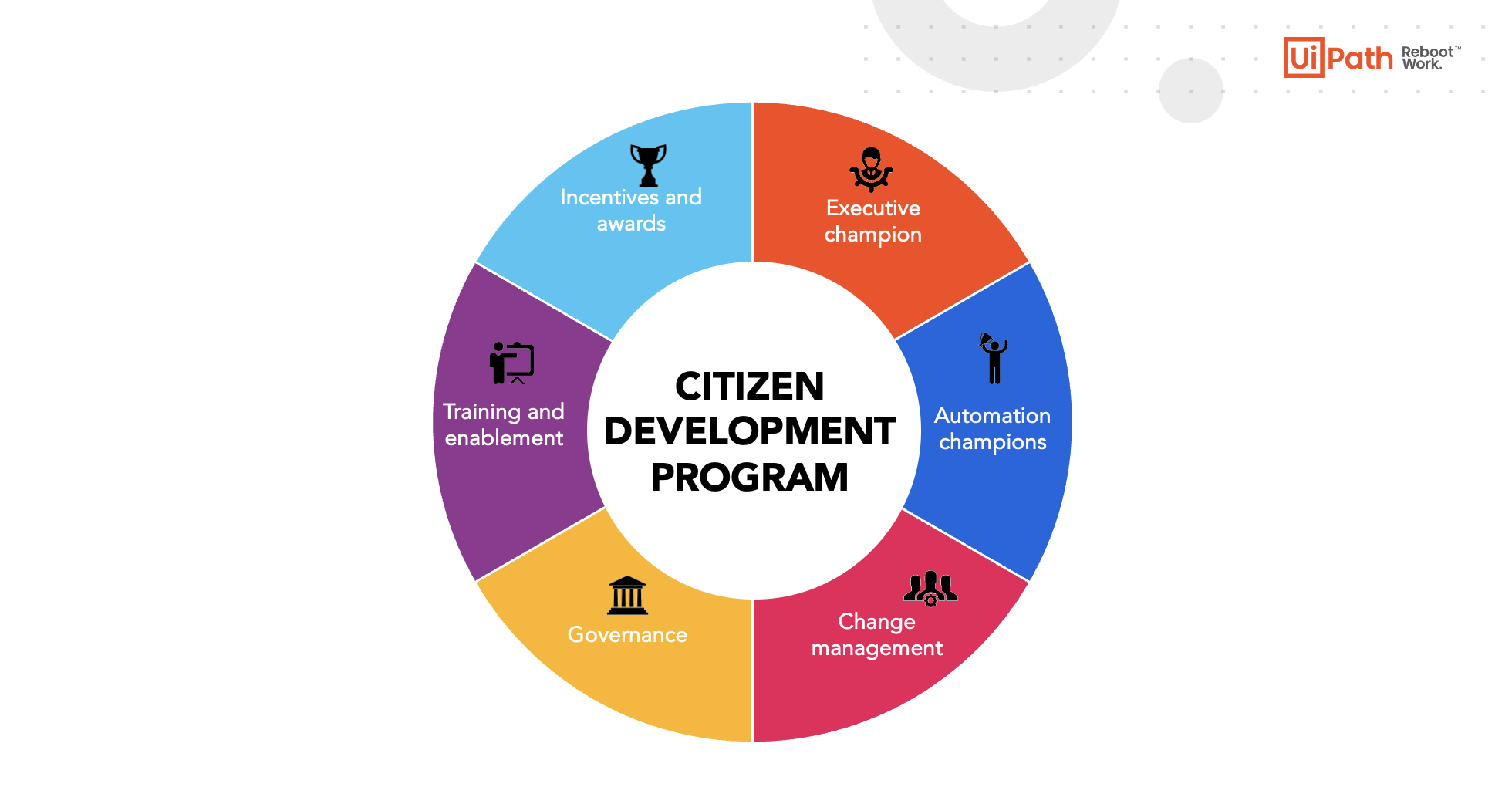Democratizing Automation: 6 Critical Success Factors You Can’t Ignore

There's no arguing that the nature of work, and how it's performed and organized—as well its meaning and importance in our lives—has changed as a result of the pandemic. Many employers have realized and responded to increasing mental health concerns of their employees. Others have also taken the opportunity to listen to their employees and provide them with meaningful opportunities to learn and grow.
There's a shift toward engaging employees with meaningful work via activities that allow employees to exercise creativity, judgment, and problem-solving skills. The routine and manual tasks employees previously spent time on are being rapidly automated.
As a result, we've seen businesses rapidly accelerate their automation and digital transformation efforts. While this has resulted in a greater number of automation initiatives and programs, some companies are still struggling to truly democratize automation.
Recommended reading: Why the Future of Automation Depends on RPA Democratization
While this is due to several (and in some cases critical) considerations, the true benefits of automation are unleashed when automation development skills are easily accessible for everyone to enhance the mundane aspects of their job. It's difficult to imagine and find real life examples of a centralized (or federated) department responsible for catering to the needs of all constituent business units while also scaling automation efforts across the organization.
Hence, employee-driven automation is key to transformative change not only for the organization but also for the employees that form it.
It’s critical to select an automation product or platform that people find user friendly and one that has rich features and capabilities to automate their work. But, today, we’re only focusing on the non-product factors that are critical to success for an organization embarking on an employee-driven automation program.

Source: UiPath
The factors (above) are the result of my own learnings and experiences with companies that have tried to enable such programs. I’ve also included my own research from external agencies and public sources (which have been cited where relevant).
Outside product or platform factors I've found these six factors most critical to successfully democratizing automation in any organization.
1. Executive champion
Automation has been historically embedded and siloed in various units within the organization.
As technologies such as robotic process automation (RPA), artificial intelligence (AI), and machine learning (ML) have emerged, centers of excellence (CoEs) have been created to ensure governance, standardization, and quality control.
To scale and democratize automation across the organization, however, is a transformative effort that needs to be driven by a strong executive champion and visionary. There must be commitment and alignment to the automation program with a tie-in back to the organization’s business objectives. Common business objectives include reducing costs, achieving greater speed and efficiency in business processes, or increasing employee engagement through their involvement in building automations.
Strong executive support is also essential to ensure cross-functional commitment and to clear any roadblocks along the way.
Find out the type of executive champion you should have at every stage of your organization’s automation journey.
2. Automation champions
As with any change and transformation effort, it’s important to assemble and start with early adopters. It’s not as important for early automation adopters to have technical skills. Their willingness to learn new skills, proactiveness to identify areas of opportunity, and leadership to inspire others within their peer group are more important than extensive technical skills.

There are several ways to find this group in your organization. One of the ways I've seen is to run an automation initiative or workshop where employees are introduced to basic automation training. And then they're immediately asked to identify and automate one or two aspects of their daily jobs that they consider manual and routine. Which employees quickly automate tasks? Those are your enthusiasts and the people that can help be champions of your automation initiatives.
Related article: How to Create a Team of Champions for Your Automation CoE
3. Change management
“The robots are coming for your jobs”, “10 Jobs that will be obsolete in 10 years,” etc. are the kinds of headlines that get workers worried. Therefore, there's natural apprehension in supporting automation programs. So clear communication, support, and commitment and buy-in from employees are essential when it comes to garnering their support for automation.

A recent Bain-UiPath study concluded that among employees who have heard of RPA, 60% have never used bots to perform tasks, yet 86% of employees want to use automation. What many employee-driven automation efforts often miss is the need for a carefully constructed change management strategy that can minimize resistance to change related to automation initiatives.
Related article: How Change Management Strategies at Cision and Morgan Stanley Drive Automation Adoption
4. Governance
Strong governance is essential for putting the right boundaries around security, compliance, and risk management across automations developed by your workforce. Some aspects of governance can be provided by the right automation platform that allows for tight software controls to ensure developed automations do not have unintended consequences.

The CoE also plays a critical role in making sure automations are compliant with the organization’s risk management and compliance standards. There's a balance to strike here in terms of enabling business users to design citizen-led automations in such a way that it doesn’t inhibit their creativity and autonomy. But in ways that also allow for risk management and auditing in the background.
Watch the webinar: Automation Governance
5. Training and enablement
Technology and tools available today certainly enable business users without a technology background to quickly learn to enable automations that can simplify a lot of manual work within their respective business processes. But the organization also needs a carefully crafted training and enablement plan that ensures employees are aware of 'the art of the possible' and can utilize the automation platform adopted by the organization. The automation CoE can provide a helping hand and guide employees while they get up to speed with their own automation expertise.
The good news is that automation-related training is available for free and can be tailored per role, whether business or technical. Incorporating and encouraging automation-related training and skills within its learning processes can also help an organization retain and attract new talent.
Related article: How to Create an RPA Training Strategy to Upskill Your Workforce
6. Incentives and awards
A well-designed award and incentive strategy can motivate and encourage the right behaviors within the workforce (as opposed to a top-down prescriptive mandate). It's important to listen closely to what your employees want and value. Then foster that through encouragement and incentives, whether it is spot bonuses or public recognition of their achievements. This is especially important early on in an organization’s citizen developer program, when it needs its early adopters to be the first citizen developers.

Your initial citizen developers help prove the value and benefits of expanding automation skills and training to the rest of the organization.
Related article: How to Evangelize RPA Within Your Organization
Companies already successfully democratizing automation
Having an automation program that scales and yields promising benefits for the organization is a transformative effort. And it should be treated as such with consideration of the above factors.
Many forward-thinking companies have already proven success through democratizing their automation initiatives.
For example, PwC, the global professional services firm, has made people-led automation development a key part of its digital transformation journey. Three years into the program, 55,000 of its United States (U.S.) employees had been “upskilled and regularly engaged with the Digital Lab, a collaboration platform where people are crowdsourcing and sharing solutions, they’ve built themselves, like bots, data models and automated workflows.”
In the U.S., “PwC employees have applied thousands of staff-built digital assets to their daily work, automating 6.5 million hours of what used to be manual tasks.”
Find out how PwC upskilled more than 50,000 employees.
If your organization already has a CoE-led automation program in place, you're well aware that the ROI of automation is hard to ignore. However, certain low volume and/or low complexity tasks and activities are still missing from your automation pipeline. That’s where a citizen-led program can be helpful.
Automation’s true value is unlocked when it's put in the hands of people who are closest to the business process(es) and workflow(s). That’s where real change happens and where employees embrace automation.
What do experts at Bain & Company and UiPath reveal about the value of democratizing automation across the enterprise? Read their report "Overcoming the Automation Paradox."

Senior Customer Success Manager, UiPath
Get articles from automation experts in your inbox
SubscribeGet articles from automation experts in your inbox
Sign up today and we'll email you the newest articles every week.
Thank you for subscribing!
Thank you for subscribing! Each week, we'll send the best automation blog posts straight to your inbox.



